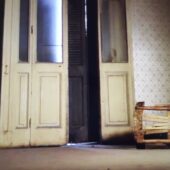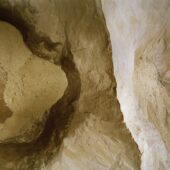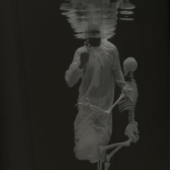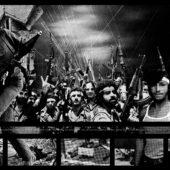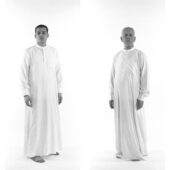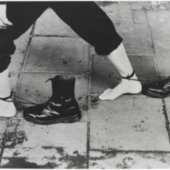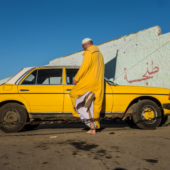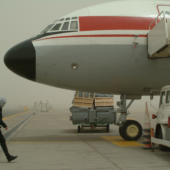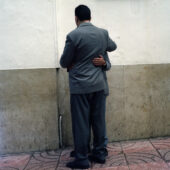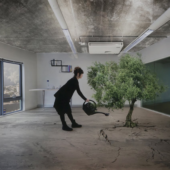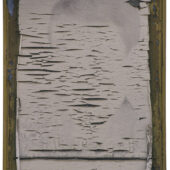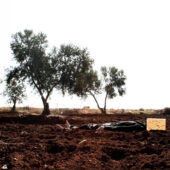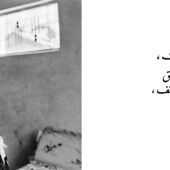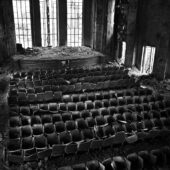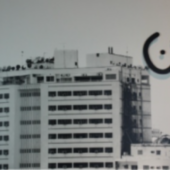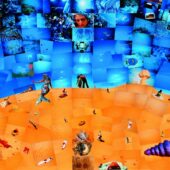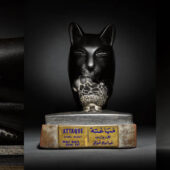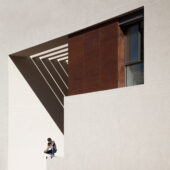The Circle was a Point
The Barjeel Art Foundation in collaboration with Foundry presents The Circle Was a Point, a mediation of its photography collection curated by Sama Alshaibi and Amir Hazim. In the spirit of photography’s defiance of uniformity, the exhibition articulates Middle Eastern and North African artists’ expression beyond political, geographical, and cultural boundaries. The works of thirty artists tell a radial and ever-evolving story of the medium and its influence, a central origin permeating the whole.
Exhibiting Artists:
Arwa Abouon, Ahmed Mater, Akram Zaatari, Al-Moutasim Al-Maskery, Alfred Tarazi, Ammar Al Attar, Bashar Alhroub, Charbel-Joseph H. Boutros, Farah Al Qasimi, Fouad ElKhoury, Huda Lutfi, Ibi Ibrahim, Joana Hadjithomas & Khalil Joreige, Lara Baladi, Larissa Sansour, Latif Al Ani, Manal Al Dowayan, Mohammed Kazem, Mona Hatoum, Mous Lamrabat, Nedim Kufi, Serge Najjar, Tarek Al Ghoussein, Van Leo, Walid Raad, Yoriyas Yassine Alaoui, Youssef Nabil, Yto Barrada and Zineb Sedira.
“Since its inception in the early 19th century, photography has characterized a series of innovations using science and artistic endeavors. Its historical progression is marked by constant evolution and experimentation, defying constrained definitions. Our selection highlights myriad possibilities, including traditional darkroom and material processes, photogenic drawings using sunlight to impress images onto paper, photographs as a tool for documenting ephemeral performances, a memory construction employing vernacular photographs and personal archives, text and photo collages, and the medium’s application in interactive installations and three-dimensional forms. While filmmaking and video art have separate histories, their inclusion traces their respective technological achievement back to the invention of photography. Notably, chronophotography contributed to understanding animation—the illusion of movement—by successively presenting individual still images in sequential time.
Many of the selected artworks exhibit a sensitivity to space, encompassing both its tangible and abstract aspects. In photography, space holds significant mathematical and logical connotations, including the unique ability to record and reinterpret the three-dimensional nature of space. When time integrates into this equation, photography introduces elements of simultaneity and abstraction. By presenting the past within the present and reorganizing space, the medium represents various layers of temporal experience. Its fluctuating conditions capture the ever-changing nature of time. The utilization of space, both as empty mass and as an isolating framing device, holds profound implications for the photographed subjects in this exhibition—whether individuals, objects, environments, customs, or ideas.
Photographs can transform the perceptions of how human bodies and inanimate formations ordinarily behave. While all photography freezes motion, most human figures in the exhibition appear far more than circumstantially still. Arrested and stoic, they emerge as architectural entities and, at times, monumental. Conversely, static objects perform an element of movement–not through physical motion, but through a sense of morphing and development. This is achieved through the artists’ use of multiplicity, wherein collections of multiple similar objects and multiple photographs suggest that every image is in the process of becoming another image. These distinct phenomena are more than formal and expressive manifestations but point to the artists’ ability to enact a performative element through unexpected devices.
Photographs travel across borders and time, testifying to their enduring influence. From the early camera obscura techniques to the modern methods of light writing, photography continues to reinvent itself. The photo-based practices of Middle Eastern and North African artists, like the origins of photography, emerge from a convergence of histories, experiments, and motivations, reflecting the dynamic evolution of this influential medium.”
Sama Alshaibi, Regents Professor of Photography, Video & Imaging, University of Arizona, USA
Co-curated with Amir Hazim
